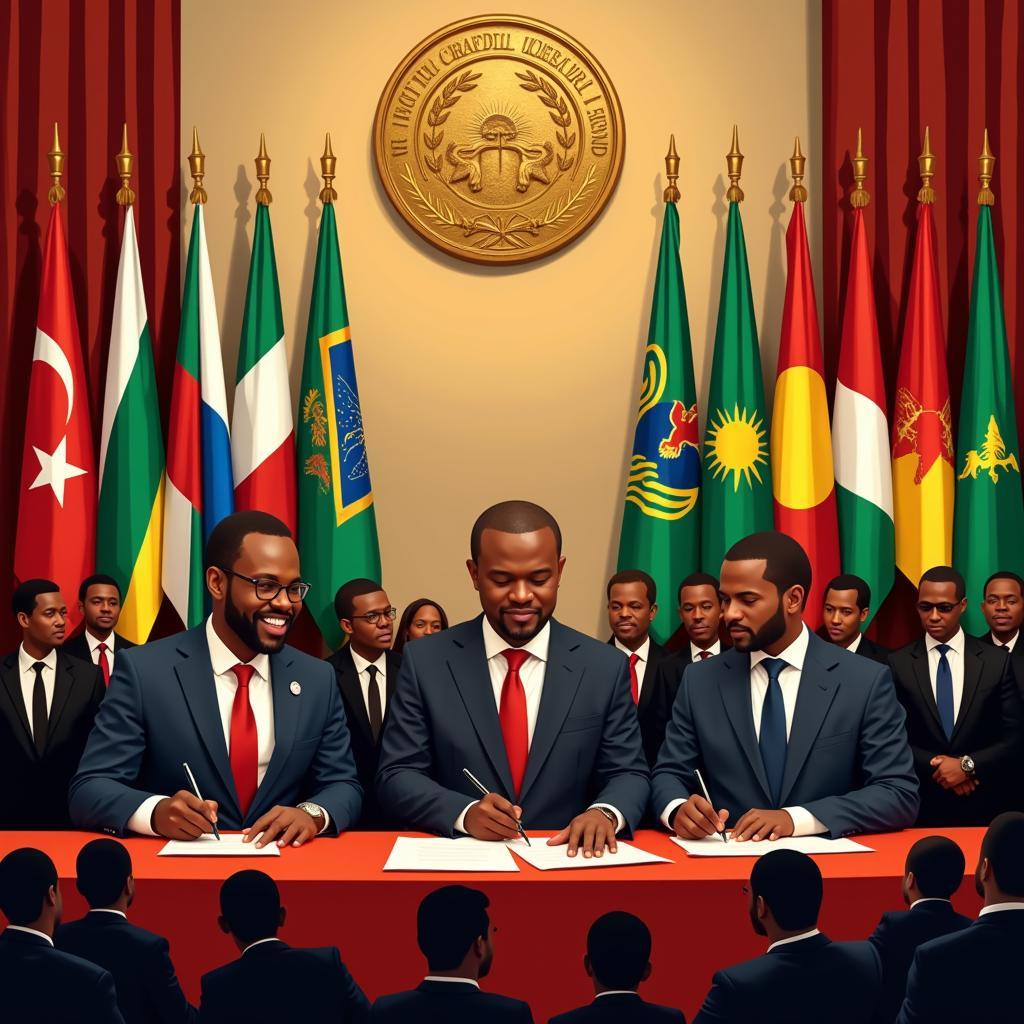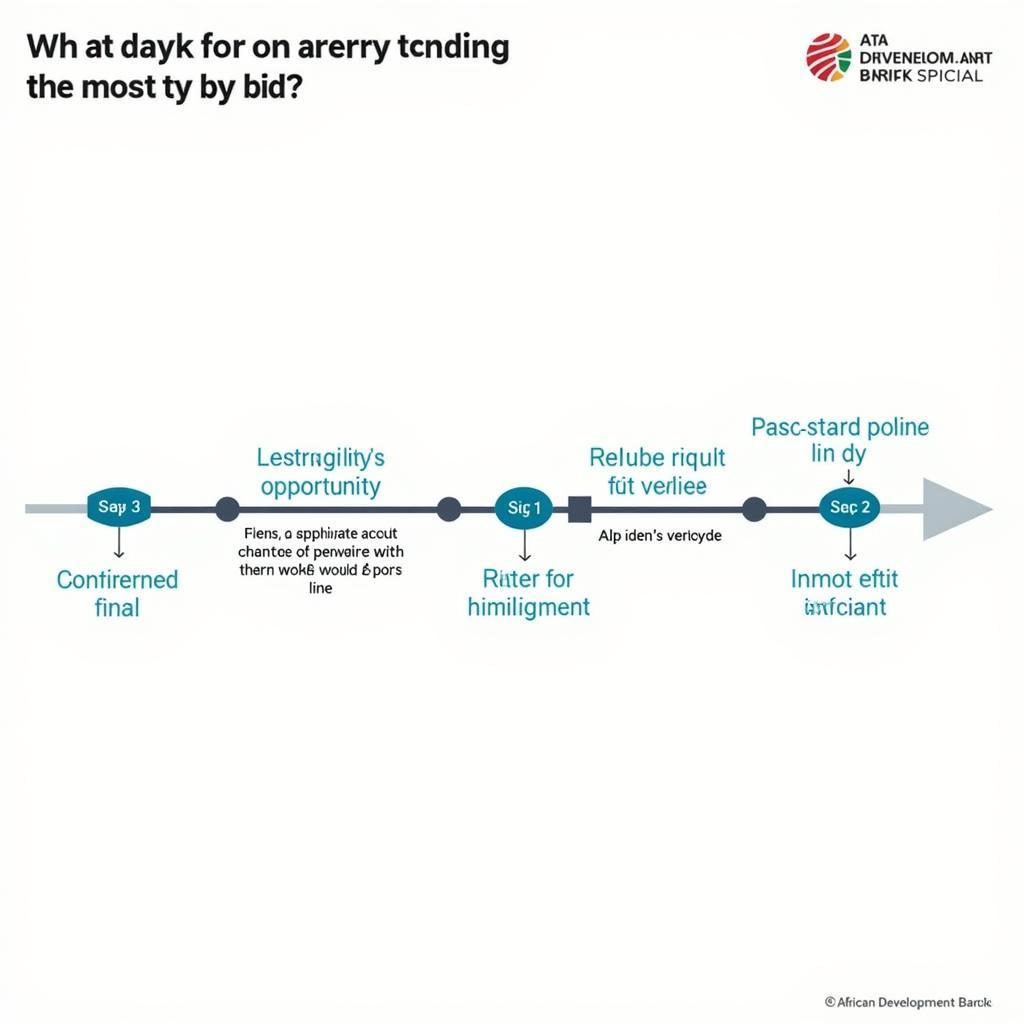Understanding the African Continental Free Trade Area (AfCFTA) 2019
The African Continental Free Trade Area (AfCFTA) agreement, officially launched in 2019, represents a monumental step towards economic integration and prosperity for the African continent. This transformative agreement aims to create a single continental market for goods and services, with free movement of businesspersons and investments, paving the way for accelerating intra-African trade and boosting Africa’s trading position in the global market.
What is the Significance of the African Continental Free Trade Area 2019?
The AfCFTA 2019 launch wasn’t just a ceremonial event; it marked a pivotal moment in Africa’s economic history. By reducing tariffs and non-tariff barriers among member states, the AfCFTA aims to unlock the continent’s vast economic potential. It promises to create new jobs, stimulate industrial development, and integrate Africa more effectively into the global economy. The agreement fosters competition and encourages economies of scale, leading to improved efficiency and lower prices for consumers.
 AfCFTA Launch Ceremony 2019
AfCFTA Launch Ceremony 2019
How Does AfCFTA 2019 Impact Intra-African Trade?
One of the primary objectives of the African Continental Free Trade Area 2019 is to boost intra-African trade. Historically, African countries have traded more with nations outside the continent. The AfCFTA aims to reverse this trend by making it easier and more cost-effective for African businesses to trade with each other. This increased trade will create new markets for African goods and services, stimulating economic growth and job creation.
Key Provisions of the African Continental Free Trade Area (AfCFTA) 2019 Agreement
The AfCFTA agreement encompasses a wide range of provisions designed to facilitate trade and investment across the continent. These include:
- Tariff Reduction: Gradually eliminating tariffs on 90% of goods traded among member states. This is a crucial step in making African products more competitive within the continent.
- Simplified Rules of Origin: Establishing clear rules of origin to prevent non-African goods from being unfairly traded within the AfCFTA.
- Trade Facilitation Measures: Implementing measures to streamline customs procedures and reduce bureaucratic hurdles to cross-border trade.
- Dispute Settlement Mechanism: Creating a mechanism for resolving trade disputes among member states in a fair and efficient manner.
What are the Challenges Facing the AfCFTA?
While the AfCFTA holds immense promise, it also faces significant challenges. These include infrastructure deficits, non-tariff barriers, and capacity constraints. Addressing these challenges requires coordinated efforts from African governments and regional organizations.
“The AfCFTA is a game-changer for Africa,” says Dr. Amina Osman, a leading economist specializing in African trade. “But realizing its full potential will require sustained commitment and investment in infrastructure and capacity building.”
[african free trade area]
The Future of the AfCFTA
The African Continental Free Trade Area 2019 is not a static agreement; it is a dynamic process. As the agreement is implemented, adjustments and refinements will be necessary to address emerging challenges and opportunities. The success of the AfCFTA will ultimately depend on the commitment and collaboration of African governments, businesses, and civil society.
[african free trade zone definition]
“The AfCFTA is more than just a trade agreement; it is a vision for a united and prosperous Africa,” explains Mr. Kwame Nkrumah, a trade policy analyst at the African Development Bank. “It is a testament to the continent’s determination to take control of its economic destiny.”
[african development bank meeting 2019]
In conclusion, the African Continental Free Trade Area 2019 represents a historic opportunity for Africa to transform its economies and improve the lives of its people. By fostering intra-African trade and creating a single continental market, the AfCFTA has the potential to unlock the continent’s vast economic potential and propel Africa towards a brighter future.
[african free trade zone 2018]
[2020 african union summit]
FAQ
- What is the AfCFTA’s main goal? To create a single continental market for goods and services in Africa.
- When did the AfCFTA officially launch? 2019.
- How many countries are part of the AfCFTA? Most African countries have signed the agreement.
- What are some of the benefits of the AfCFTA? Increased intra-African trade, job creation, and economic growth.
- What are some of the challenges facing the AfCFTA? Infrastructure deficits, non-tariff barriers, and capacity constraints.
- How will the AfCFTA impact consumers? Lower prices and greater choice of goods and services.
- What is the role of the African Union in the AfCFTA? The African Union championed and facilitated the creation of the AfCFTA.
When you need assistance, please contact us: Phone Number: +255768904061, Email: kaka.mag@gmail.com or visit our office at Mbarali DC Mawindi, Kangaga, Tanzania. We have a 24/7 customer service team.

